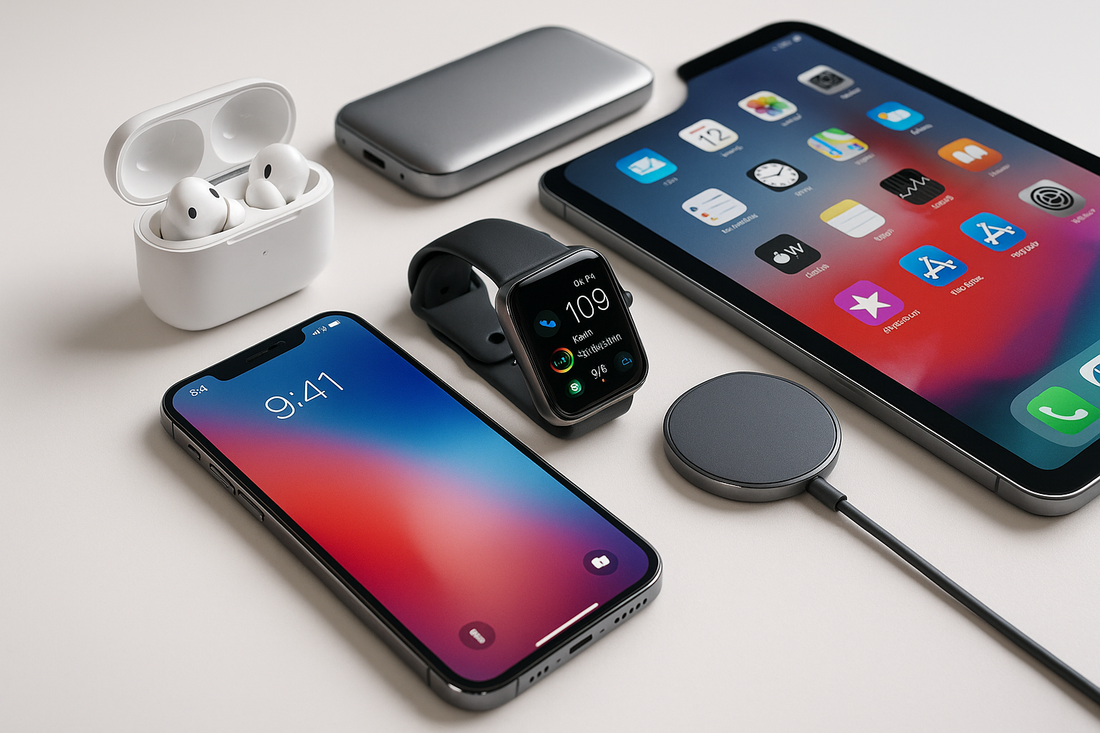
The Evolution of Portable Music
Share
The Evolution of Portable Music: From Walkman to Wireless Earbuds

Table of contents
- Why this history matters now
- 1979–1990s: The cassette era
- 1990s–2000s: Portable CDs and anti-skip tech
- 1998–2007: The MP3 revolution
- 2001–2010: The iPod renaissance
- 2010s: Smartphones and streaming
- 2016–Today: True wireless earbuds
- Sound quality: Why portable audio got better
- Retro collecting & modern revivals
- FAQ
- Sources & further reading
Why this history matters now
Portable music has always been a tug‑of‑war between convenience, sound quality, and style. Knowing how we moved from analog tape to streaming helps today’s listeners choose the right gear — whether that’s wireless earbuds for the gym, noise‑cancelling headphones for travel, or a hi‑res DAC for true audio enthusiasts.
1979–1990s: The cassette era
In 1979, Sony’s Walkman popularized truly private listening on the go. Cassettes were compact, recordable, and durable enough for backpacks and jogs. Headphone culture — and the idea of a personal soundscape — was born.
- Strengths: Recordability, mixtapes, portability, long battery life.
- Limitations: Tape hiss, wow and flutter, mechanical wear.

1990s–2000s: Portable CDs and anti‑skip tech
Portable CD players brought digital clarity and lower noise. Early models skipped when bumped; later units added anti‑skip buffers and better servo control. Headphone amps improved, and 16‑bit/44.1 kHz became the baseline for high‑quality portable audio.
- Strengths: Clean sound, easy track navigation, album artwork.
- Limitations: Bulky discs, limited portability during activity.
1998–2007: The MP3 revolution
Solid‑state MP3 players eliminated moving parts. Early flash storage was tiny and expensive, but convenience won. Ripping CDs and building digital libraries changed how people discovered music and curated playlists.
- Strengths: Shuffle play, pocket‑size players, no moving parts.
- Limitations: Compression artifacts at low bitrates, clunky desktop software.
2001–2010: The iPod renaissance
Hard‑drive‑based players like the iPod scaled libraries into the thousands of songs with sleek interfaces and iconic click wheels. Portable audio became a lifestyle, and headphones evolved from simple earbuds to premium over‑ear designs.
Why it mattered
Mass adoption standardized digital purchases, improved navigation UX, and set expectations for battery life and pocketability.
Tech ripple effects
Flash storage and mobile CPUs improved rapidly, laying groundwork for modern smartphones and streaming apps.
2010s: Smartphones and streaming
Streaming turned music into a service. Instead of owning files, listeners gained instant catalogs, offline modes, and smart recommendations. Bluetooth became default, pushing manufacturers to innovate in codecs and battery efficiency.
- Strengths: Unlimited libraries, discovery algorithms, social sharing.
- Limitations: Variable bitrate, subscription dependency, phone battery drain.
2016–Today: True wireless earbuds
True wireless earbuds (TWS) combined Bluetooth advances, efficient chipsets, and beamforming mics. Active noise cancelling (ANC) and transparency modes now fit in gram‑weight buds with case charging that delivers days of use.
Key innovations
- Adaptive ANC and ear‑scan EQ
- Multipoint and low‑latency modes for gaming
- Water resistance and workout‑friendly fits
- LE Audio & LC3 paving the next codec leap
Shop smart
Choosing TWS? Start with our curated wireless earbuds, compare ANC headphones, or explore hi‑res DACs & amps.
Sound quality: Why portable audio got better
Three forces drove better sound on the go: codecs, drivers, and power. Bluetooth codecs evolved (SBC → AAC/aptX/LDAC → LC3/LE Audio), earbud drivers switched to efficient dynamic and hybrid designs, and batteries + power management silicon squeezed more hours from tiny cells.
- Codec clarity: Higher bitrates and smarter psychoacoustics reduce artifacts.
- Driver design: Vents, nozzles, and better materials tame resonances for cleaner mids/treble.
- Fit & seal: Tips and wings matter more than specs — a good seal unlocks bass and ANC performance.
Retro collecting & modern revivals
Vintage Walkmans and MiniDisc players have a thriving collector scene. Meanwhile, modern brands borrow retro design cues while packing in today’s guts — Bluetooth, USB‑C, and better batteries. Nostalgia is fun, but daily drivers win on convenience.

Shop the moment
FAQ
- Are wired headphones still better than wireless?
- For critical listening, a good wired setup can still edge out Bluetooth — but modern codecs and ANC make wireless the most practical for daily use. The right fit often matters more than the spec sheet.
- What’s the best codec for sound quality?
- On iPhone, AAC is the practical choice. On many Android devices, LDAC or aptX Adaptive can deliver higher bitrates when conditions allow. LE Audio’s LC3 prioritizes efficiency and reliability.
- How long should good earbuds last?
- With regular use, expect 2–4 years before battery capacity noticeably declines. A charging case that supports replacement or service can extend life.
Sources & further reading
For historical context: brand archives, museum collections, press materials, and contemporary reviews from the cassette, CD, and MP3 eras. Notable sources include Sony corporate history, Apple product archives, Bluetooth SIG documentation, and audio engineering texts on psychoacoustics and codec design.
Enjoyed this deep dive? Share it with a friend, or link to it in your next article. If you cite this post, please include a link to savytechgadgets.com.
